Abstract
The ability of stimuli correlated with successive periods in a fixed interfood interval to support a response that produced or removed them was examined using pigeons. The degree to which those correlated stimuli elicited directed key pecks was also obtained. Stimuli early in the interval functioned as negative reinforcers, and stimuli late in the interval functioned as positive reinforcers. Stimuli correlated with successively later portions of the second half of the interval supported successively higher rates of elicited pecking and, with the exception of the final stimulus, supported successively higher rates of stimulus production. Stimuli in successively earlier portions of the first half of the interval supported successively higher rates of correlated-stimulus removal. This effect occurred in spite of the addition of a conjoint variable-interval dependency for food. An ogive fit to the mean normalized response distributions resulted in r2s demonstrating that most of the variance in the temporal organization of the behavior was accounted for. The findings were taken to indicate that fixed interfood intervals establish bipolar control.
Keywords: autoshaping, observing responses, excitation, inhibition, fixed-interval schedule, conjoint schedule, comparator, key peck, pigeons
Full text
PDF
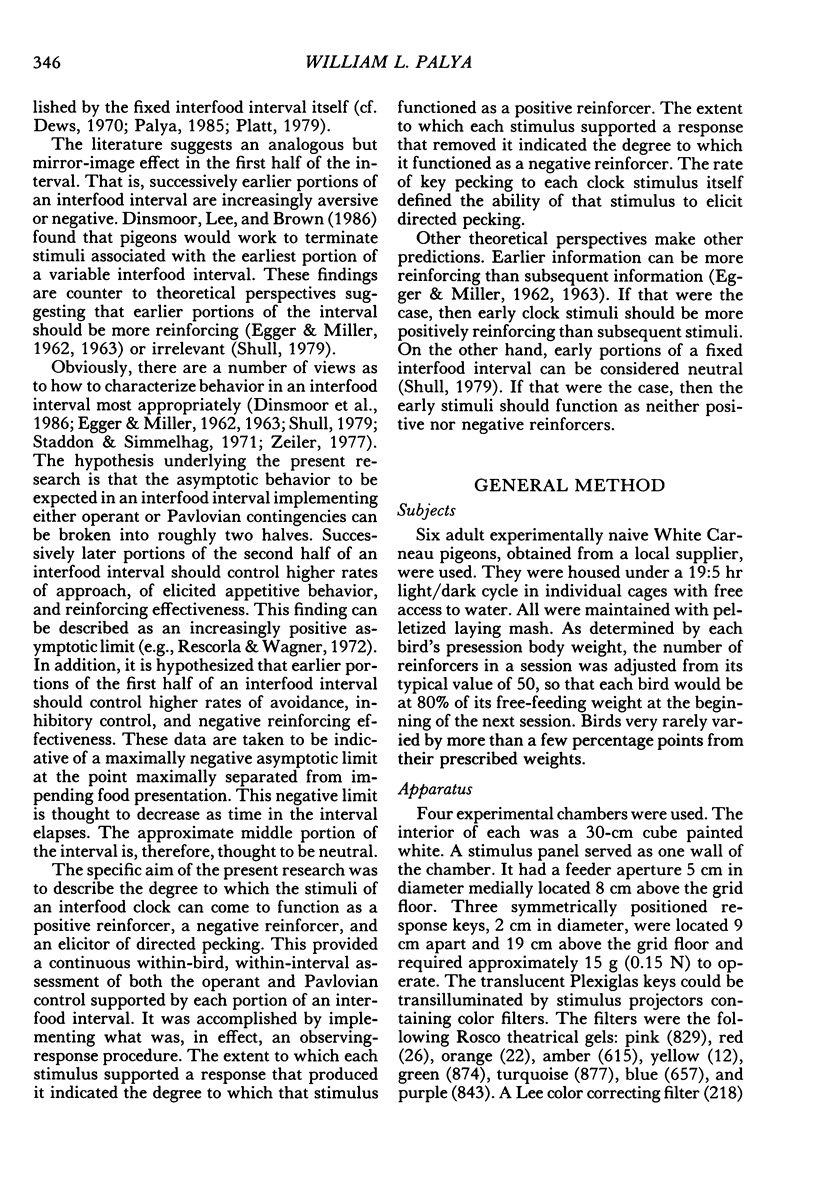
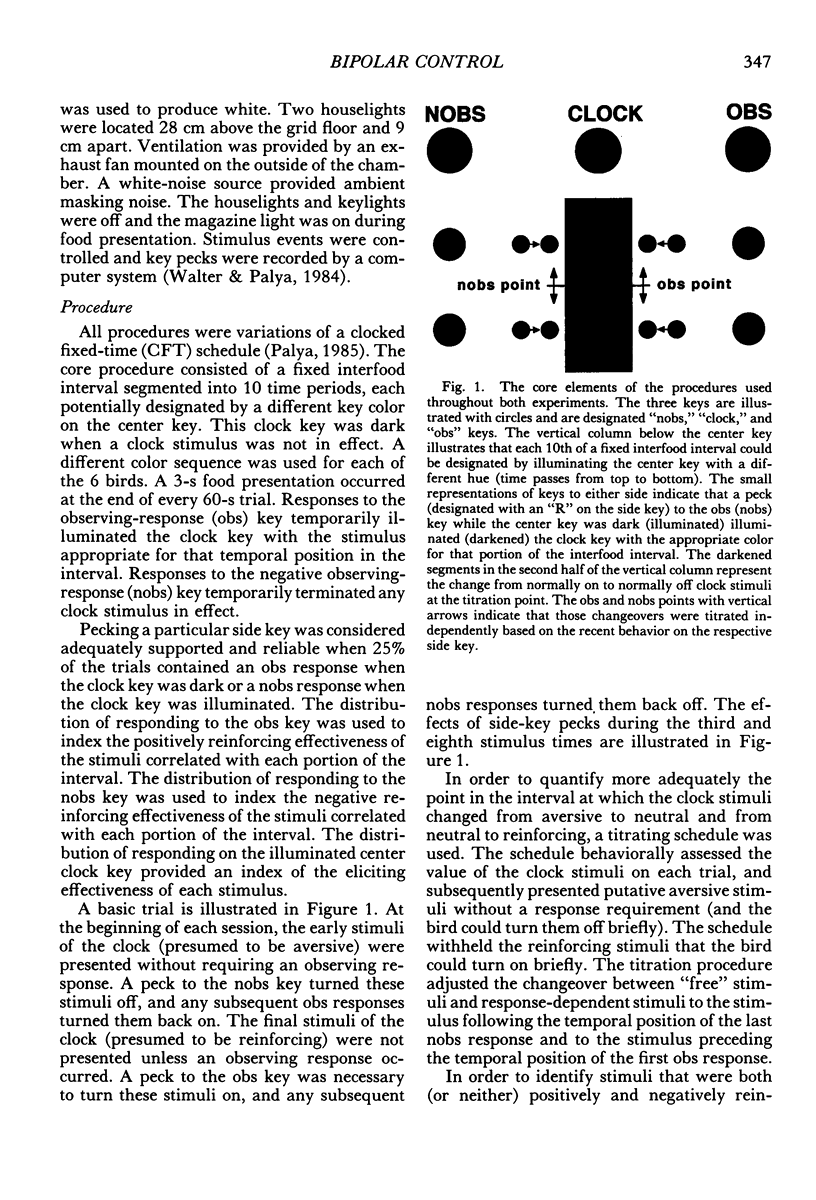
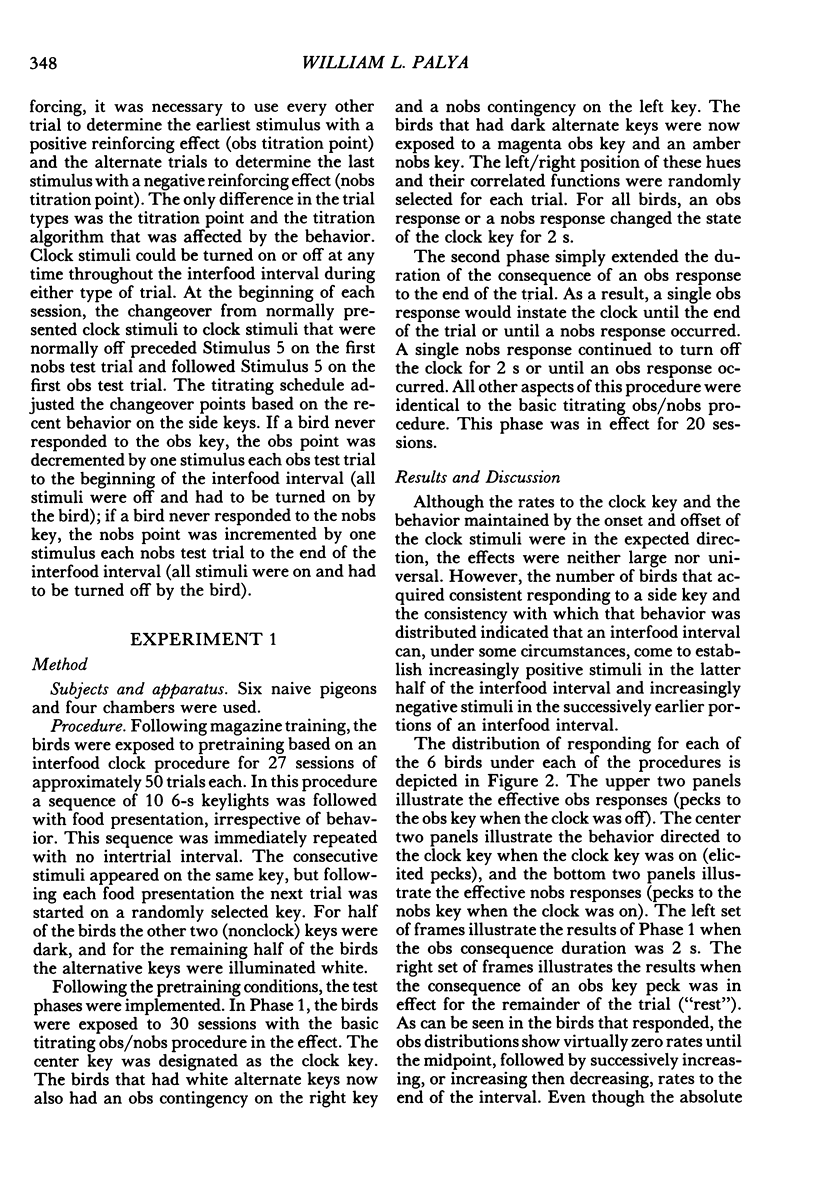
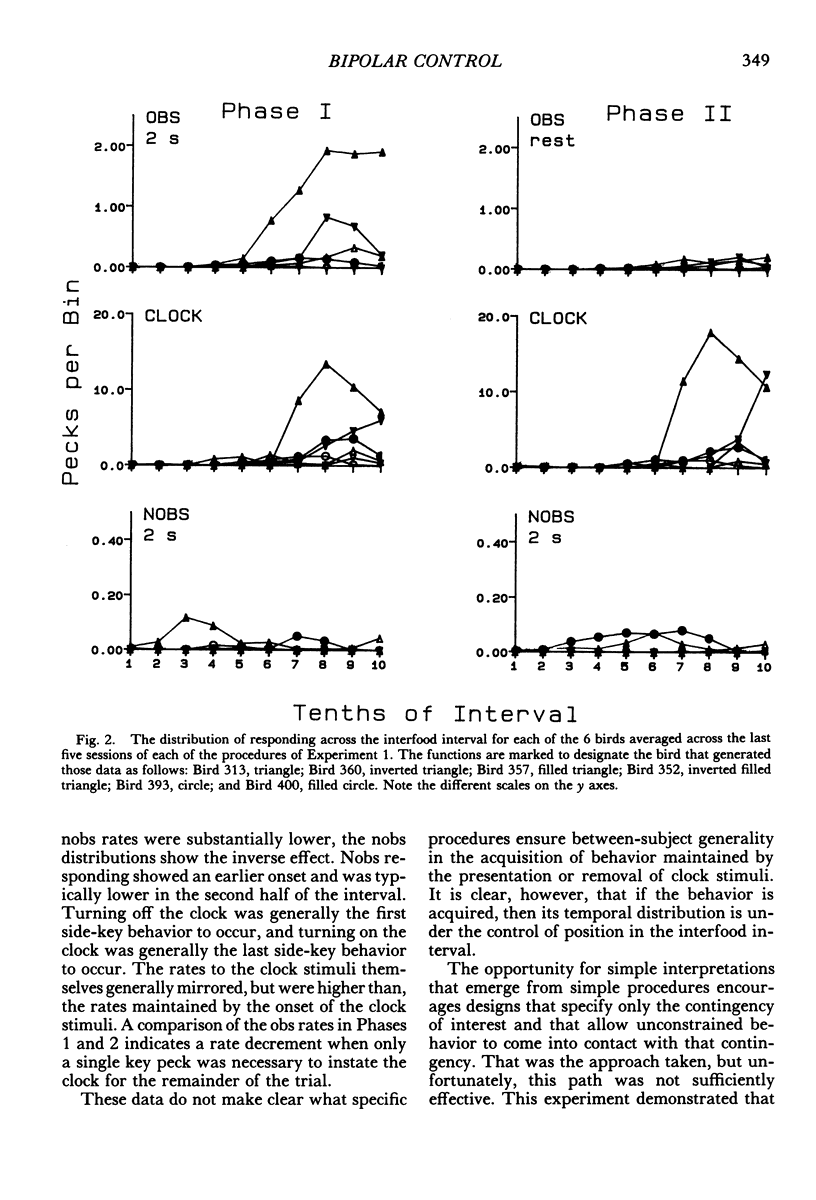


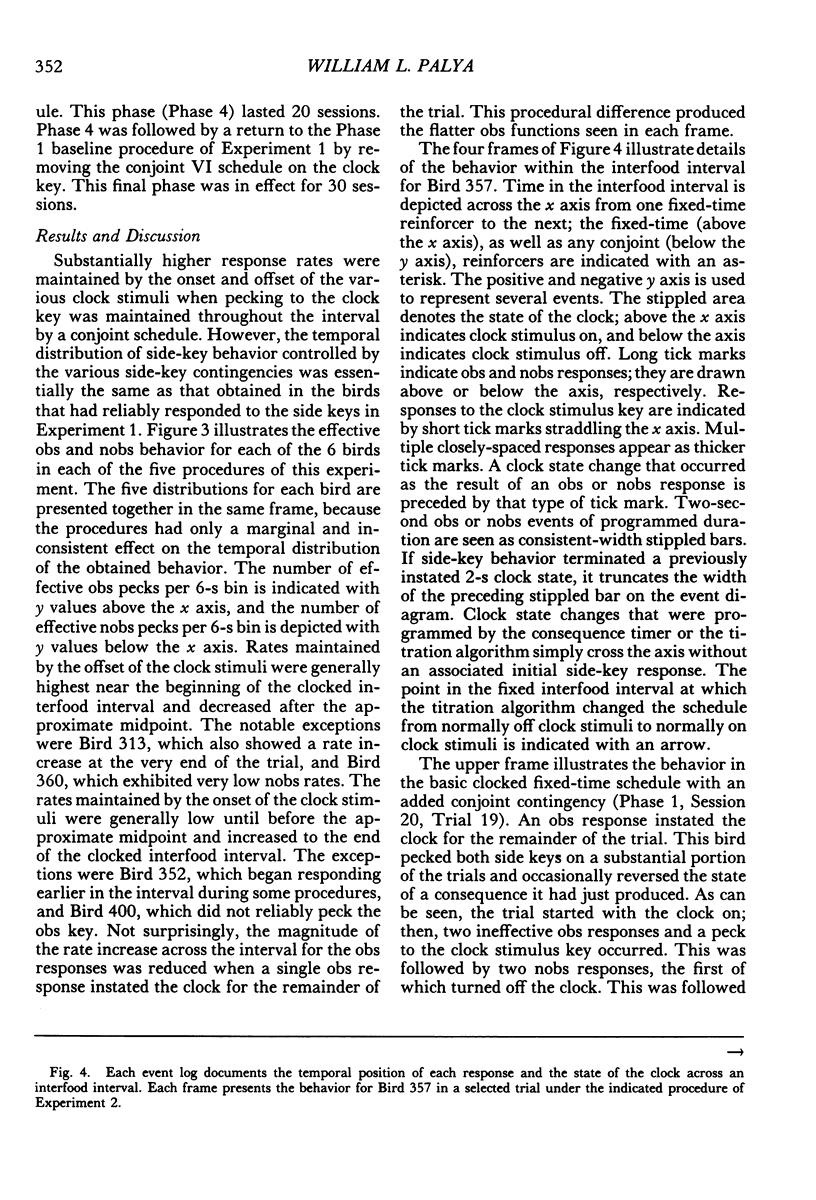

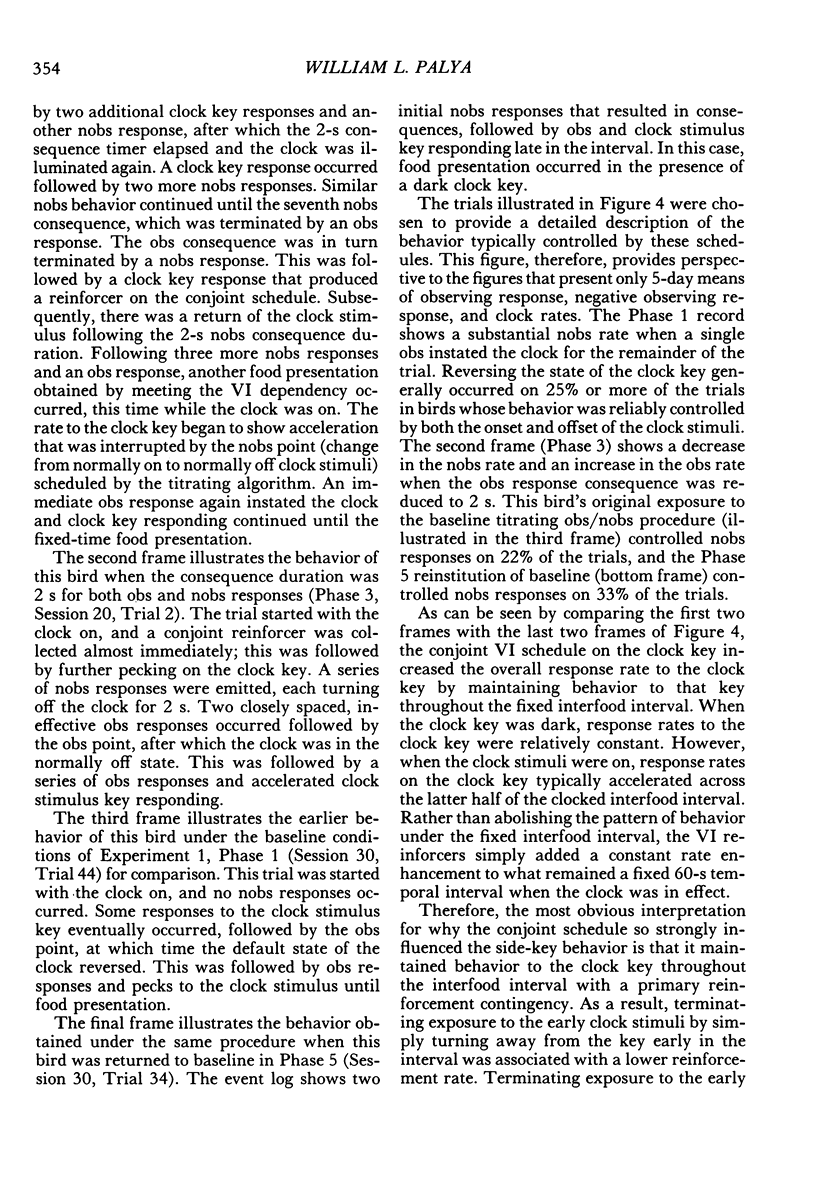
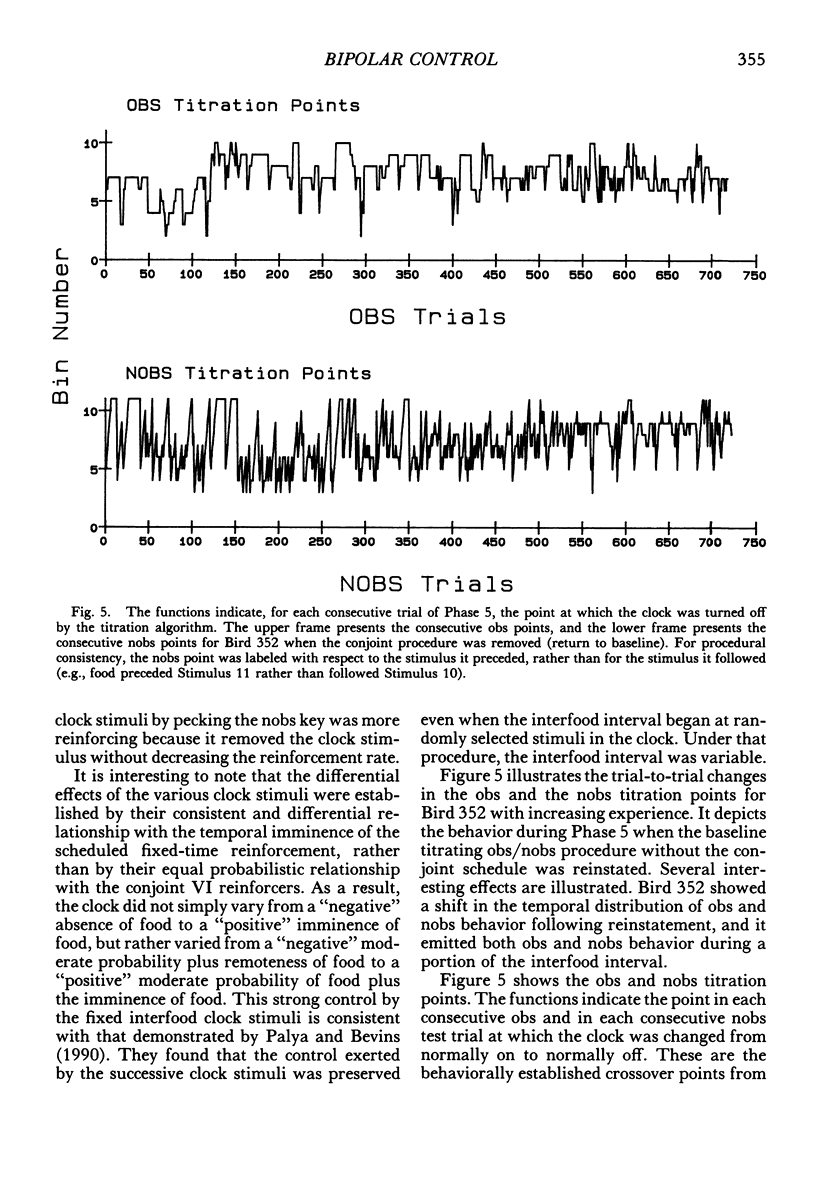
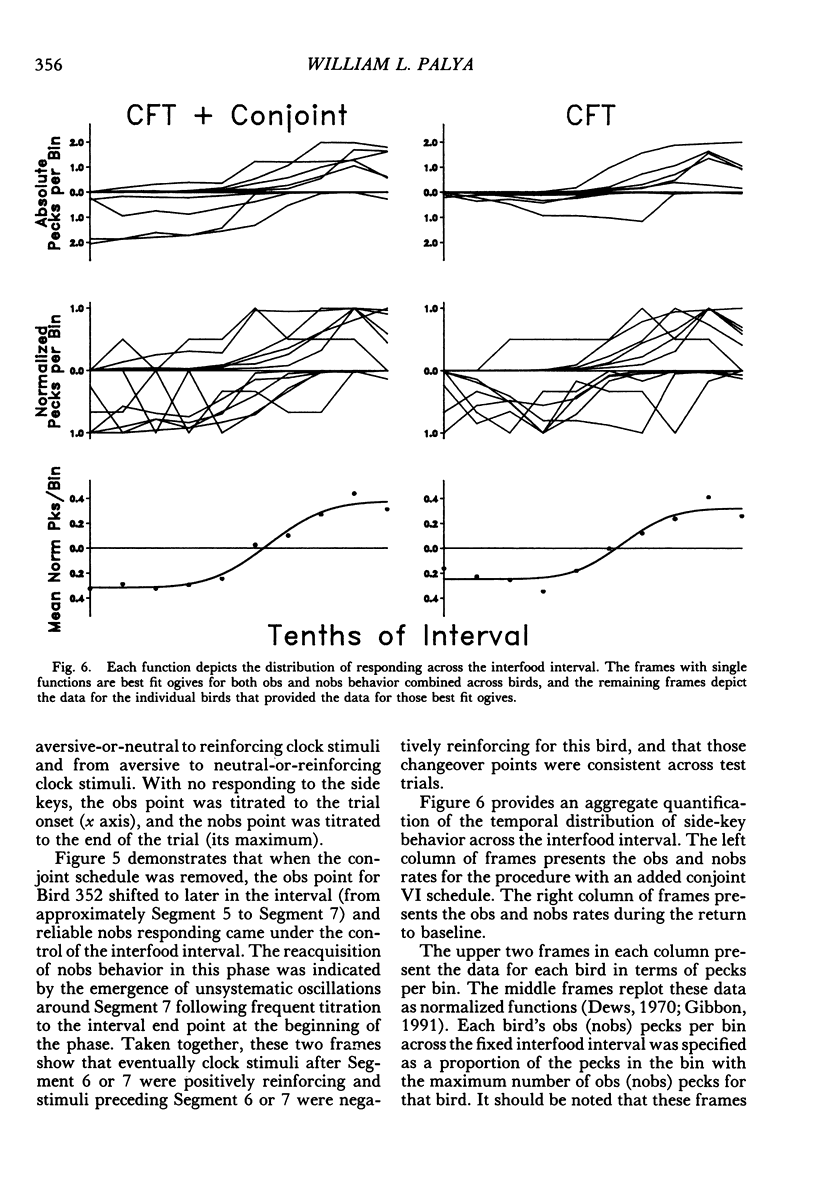



Selected References
These references are in PubMed. This may not be the complete list of references from this article.
- Dinsmoor J. A., Lee D. M., Brown M. M. Escape from serial stimuli leading to food. J Exp Anal Behav. 1986 Nov;46(3):259–279. doi: 10.1901/jeab.1986.46-259. [DOI] [PMC free article] [PubMed] [Google Scholar]
- EGGER M. D., MILLER N. E. Secondary reinforcement in rats as a function of information value and reliability of the stimulus. J Exp Psychol. 1962 Aug;64:97–104. doi: 10.1037/h0040364. [DOI] [PubMed] [Google Scholar]
- Herrnstein R. J. On the law of effect. J Exp Anal Behav. 1970 Mar;13(2):243–266. doi: 10.1901/jeab.1970.13-243. [DOI] [PMC free article] [PubMed] [Google Scholar]
- Palya W. L., Bevins R. A. Serial conditioning as a function of stimulus, response, and temporal dependencies. J Exp Anal Behav. 1990 Jan;53(1):65–85. doi: 10.1901/jeab.1990.53-65. [DOI] [PMC free article] [PubMed] [Google Scholar]
- Palya W. L. Sign-tracking with an interfood clock. J Exp Anal Behav. 1985 May;43(3):321–330. doi: 10.1901/jeab.1985.43-321. [DOI] [PMC free article] [PubMed] [Google Scholar]
- Segal E. F. Exteroceptive control of fixed-interval responding. J Exp Anal Behav. 1962 Jan;5(1):49–57. doi: 10.1901/jeab.1962.5-49. [DOI] [PMC free article] [PubMed] [Google Scholar]


